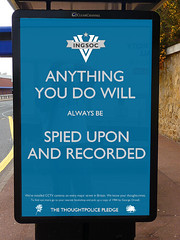During your next customer call, or a team meeting – ask about pain points. Delve into the issues that your customer or your team has. Ask for the number one issue and ask for the context so that you can adequately understand it.
Now, time yourself.
- How long does it take for you to interrupt?
- How long does it take for you to offer a solution?
- How quickly do you step into this conversation?
In this interesting video from leadership guru, Tom Peters, we learn that many professionals (in this instance he profiles doctors – but extrapolates to a wider business audience) interrupt their team within a very short time. So short, in fact, that it can be measured in seconds – 18 seconds.
Now, even if you quadrupled the amount of time that you listened to your customer – or your team – you’d still only be “listening” for about a minute. Is a “one minute boss” better than an 18 second boss? I’d suggest that we need to follow Tom’s advice here and recast how we act and perform as leaders. If we did, indeed, place “listening” ahead of strategic plans, how would our organizations change? If we did actively engage in “strategic listening”, how would our teams perform? What would our customer satisfaction ratings show?
So once you have listened – well beyond that 18 seconds. Well beyond that one, single minute – how do you respond? How do you build on the moment?
I am making a leap here – but it strikes me that listening and empathy go hand-in-hand. As this Harvard Business School article explains, it’s not necessarily what is communicated but the manner of that communication that is important:
In effect, the delivery was more important than the message itself. And everybody knows that when people feel better, they perform better. So, if leaders hope to get the best out of their people, they should continue to be demanding but in ways that foster a positive mood in their teams. The old carrot-and-stick approach alone doesn’t make neural sense; traditional incentive systems are simply not enough to get the best performance from followers.
So as we listen more, become attuned to our customers, our teams, our bosses and even our partners, we can begin to transform these relationships. We start by listening and then continue through positive communication. Does this sound hard? Not at all – it’s just a matter of time.
Nina Nets It Out: It’s easy for leaders to jump into a conversation – to offer an opinion, a solution or a way forward. But how quickly do we do this? Do we listen long enough? Do we listen strategically? Maybe, as Tom Peters suggests, we should wait longer than 18 seconds.
